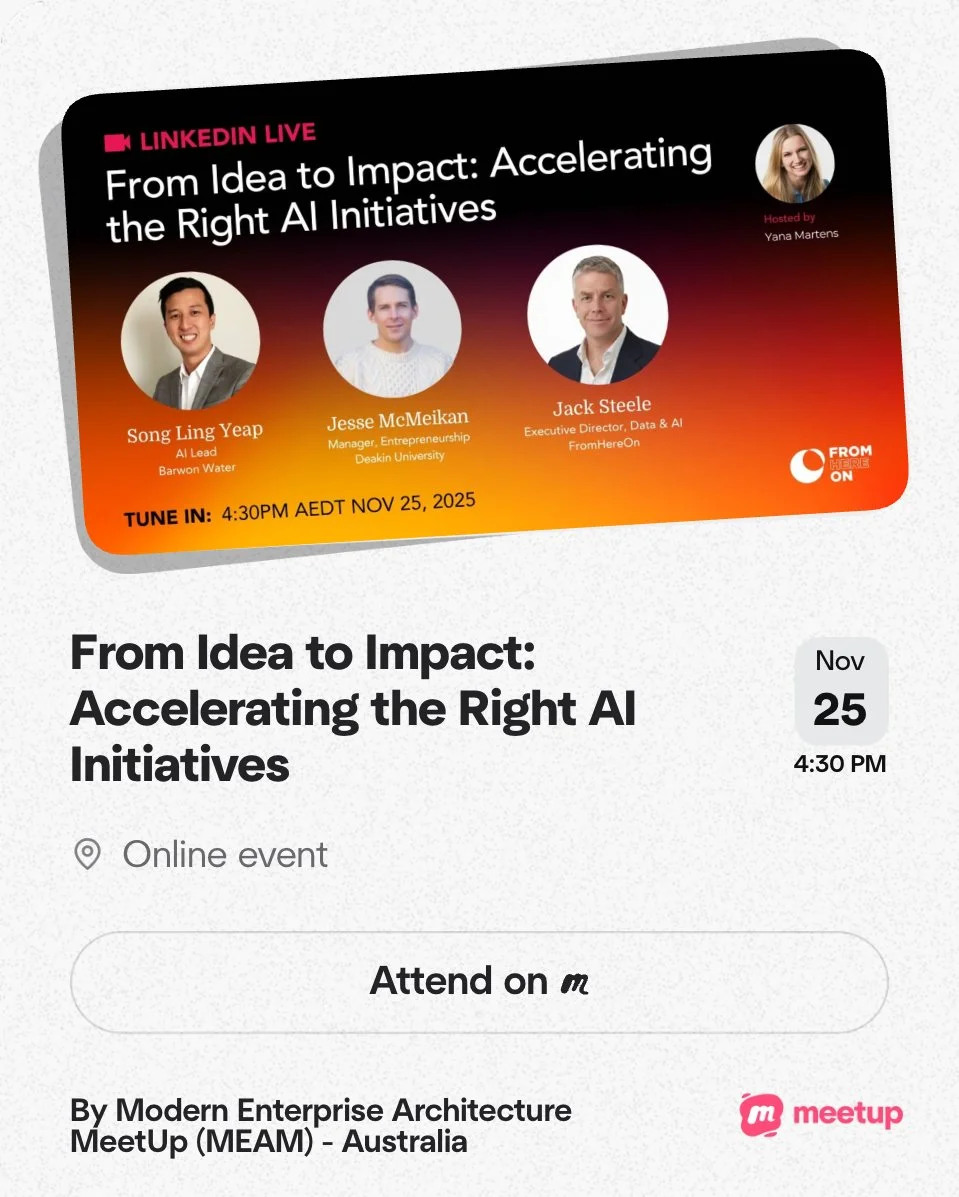Vibe Coding for Non-Tech Users: the Future of Work in Enterprise
The story of enterprise technology has always been one of translation.
Business leaders describe what they want. Technologists interpret, design and deliver. For decades that translation has been slow and expensive, despite best efforts. Good ideas get stuck.
Enter vibe coding
AI has crossed from helper to maker. That brings the promise of engineering everywhere, for anyone. Non technical people can state what they want in plain language, and agents build it. Code, services, tests and deployment. It is software creation at the speed of conversation.
The first use feels like magic. A prompt becomes a working tool in minutes. For non technical teams it feels like self sufficiency and the end of waiting. For technical teams it can feel like loss of control, as if someone has taken the keys to your car and is already down the road. This speed creates risk. Without a working model in place, it can feel like an unsanctioned CapEx event with no budgeting or governance oversight.
The shift is not about tools. It is about culture and capability.
The challenge: Matching control to speed
Speed without structure creates risk. The answer is to keep people in charge and make the operating model fit the pace. When humans stay in the loop, overseeing design, data, security and risk, speed can turn from mess into sustainable value. The task now is to redesign how work happens, to make space, to redefine the architect as a context engineer, and to reframe transformation around judgment, not automation.
We ran a LinkedIn live panel session to unpack this shift, providing a blueprint for how AI agents are disrupting software delivery and why your role is more critical than ever.
Watch the replay >
Impact on business
Delivery economics are changing faster than the governance that supports them. You cannot ban this without fuelling shadow IT, and you cannot ignore it. Your role is to shape it, set guardrails, and enable the business to use it well.
Many licensed platforms will look redundant as agents automate work that once needed bespoke integrations or whole teams of developers. Modern IT is shifting from factory to orchestra, curating environments and providing paved roads so the safe path is the fast path. Controls live in code. Identity, data contracts, and observability are built in. The opportunity is scale. Massive productivity is now achieved through marginal gains replicated by the entire workforce.
“We’re going to have billions of people able to code. The barrier to being able to get stuff done is very, very low. This is the biggest shock to the tech industry we’ve seen in decades, maybe ever… we’re reducing delivery cycles from months to hours.”
The human edge
AI is redrawing the boundaries of human work. As machines learn to code, calculate and optimise, the technical skills we prize in people are shifting toward enduring sensibilities that enable value. The capacity to envision what is possible, articulate intent, and build trust across systems and teams becomes central.
Human expertise is still central. Low code still needs high judgement. Generators produce scaffolds. They do not decide what matters, what to keep, what to cut, or what works in context.
AI may execute, but it cannot empathise, persuade, inspire belief or make the best judgement calls. That remains human work, and it defines the modern architect that shapes transformation at scale.
“It is the best time to be a good architect and the worst time to be a bad one. If you stay complacent you will be in trouble. If you are connected, curious and making sense of things, you will be empowered like never before.”
-
Imagination is the architect’s superpower in an AI enabled world. It means rethinking how work gets done when code is no longer the bottleneck. It links business ambition to new possibilities and turns friction into flow. You shape stories that teams can co design around, so experiments prove value fast without breaking trust. This reflects the modern EA tilt toward creative problem framing and innovation.
-
Clarity is precision in intent. When anyone can build, the architect makes purpose explicit and testable. You describe what is needed, why it matters, and how success will be verified in language that humans and machines both understand. You define users, inputs, outputs, risks and controls, and link them to measures. Clear briefs align diverse teams and turn direction into reliable delivery.
-
Connection is the human work of change. Architects help organisations and people adapt by building trust, shared language and clear intent. You listen for pain, name the stakes, align incentives and coach adoption inside real workflows. You create forums where decisions stick and learning compounds. Connection turns digital change into collective progress that lasts.
-
In a world of frictionless creation, disposable apps pile up like paper cups after a stand up. Each solved a moment. Few survive a quarter. Treat that sprawl as telemetry. It points to unmet needs, stalled approvals and repeating patterns. Judgement turns noise into decisions. It builds shared language for what good looks like and why.
Proof in practice
In our live session we went from a one line brief to a working risk assessor in minutes. Plain intent. Agent logic. Human judgement to shape what mattered. That speed is now the baseline.
We also built at scale. Our knowledge system manages 23 years of IP through agent-written code and multiple integrations. Full security. Full deployment pipeline. It shipped production-ready because people set the boundaries and agents executed within them.
Conditions for success
Ownership that sticks
Name an executive owner and embed a lead in each squad.
A real pipeline
Capture, size and move a few use cases into build each quarter, with clear owners.A prewired sandbox
Approved tools, fast access to data and a quick path to connect systems.Register and run budgets
Log every app with owner, purpose, data class and environment. Meter prompts and agent calls. Show cost per task and what agents built.Two tracks with discipline
Innovation under lean gates. Business tools under formal change. Data quality and security non-negotiable. Report minutes saved, errors avoided, adoption and cost per outcome.
Vibe coding is reshaping how work gets done. If you wait for perfect clarity, you will be reacting to shadow apps instead of leading capability.

